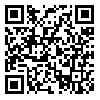Sat, Jun 28, 2025
[Archive]
Volume 39, Issue 1 (1-2025)
Med J Islam Repub Iran 2025 |
Back to browse issues page
Download citation:
BibTeX | RIS | EndNote | Medlars | ProCite | Reference Manager | RefWorks
Send citation to:



BibTeX | RIS | EndNote | Medlars | ProCite | Reference Manager | RefWorks
Send citation to:
Mirenayat M S, Fakharian A, Valizadeh M, Abedi M, Sadeghi S, Zahiri R, et al . Evaluation of Inspiratory Muscle Training Effect Compared With Diaphragmatic Breathing in Respiratory Parameters in Amyotrophic Lateral Sclerosis Patients: A Randomized Controlled Trial. Med J Islam Repub Iran 2025; 39 (1) :279-285
URL: http://mjiri.iums.ac.ir/article-1-9482-en.html
URL: http://mjiri.iums.ac.ir/article-1-9482-en.html
Maryam Sadat Mirenayat 

 , Atefeh Fakharian
, Atefeh Fakharian 

 , Melika Valizadeh
, Melika Valizadeh 

 , Mohsen Abedi
, Mohsen Abedi 

 , Somayeh Sadeghi
, Somayeh Sadeghi 

 , Reyhaneh Zahiri
, Reyhaneh Zahiri 

 , Bahram Haghi Ashtiani
, Bahram Haghi Ashtiani 

 , Fatemeh Masaebi
, Fatemeh Masaebi 

 , Babak Zamani
, Babak Zamani 




 , Atefeh Fakharian
, Atefeh Fakharian 

 , Melika Valizadeh
, Melika Valizadeh 

 , Mohsen Abedi
, Mohsen Abedi 

 , Somayeh Sadeghi
, Somayeh Sadeghi 

 , Reyhaneh Zahiri
, Reyhaneh Zahiri 

 , Bahram Haghi Ashtiani
, Bahram Haghi Ashtiani 

 , Fatemeh Masaebi
, Fatemeh Masaebi 

 , Babak Zamani
, Babak Zamani 


Pulmonary Rehabilitation Research Center (PRRC), National Research Institute of Tuberculosis and Lung Diseases (NRITLD), Shahid Beheshti University of Medical Sciences, Tehran, Iran , fakharian_2005@yahoo.com
Abstract: (415 Views)
Background: Many patients with amyotrophic lateral sclerosis (ALS) experience respiratory failure. The use of respiratory muscle training exercises can improve the respiratory function of these patients. This study aimed to evaluate the effect of inspiratory muscle training (IMT) on respiratory muscle function in ALS patients.
Methods: In the current randomized controlled clinical trial study, 22 patients were randomly divided into intervention (n = 11) and control groups (n = 11). In the control group, patients used only chest-opening training and diaphragm exercises. Patients in the intervention group used IMT in addition to controlled exercises (chest opening training and diaphragm exercises). Respiratory function by spirometry and monitoring of maximum inspiratory and expiratory pressure, functional capacity with a 6-minute walk test, and arterial blood gases were also assessed by ABG analysis at baseline and after 8 weeks. A comparative analysis of variables was performed with a student t-test, considering type 1 error (α = 0.05) using SPSS 27 software.
Results: The indexes included maximal inspiratory pressure (PImax) (P = 0.000) and maximal expiratory pressures PEmax (P = 0.002). The strength of breathing muscles index (S-index) (P = 0.002) had a significant increase before and after rehabilitation in both groups (P ˂ 0.05). In intergroup analysis, the only factor with a significant increase was PImax (P = 0.019).
Conclusion: The use of IMT, along with chest opening training and diaphragm exercises, can cause a relative improvement of the respiratory muscles' function indexes, especially PImax in ALS patients. More clinical trials are required.
Methods: In the current randomized controlled clinical trial study, 22 patients were randomly divided into intervention (n = 11) and control groups (n = 11). In the control group, patients used only chest-opening training and diaphragm exercises. Patients in the intervention group used IMT in addition to controlled exercises (chest opening training and diaphragm exercises). Respiratory function by spirometry and monitoring of maximum inspiratory and expiratory pressure, functional capacity with a 6-minute walk test, and arterial blood gases were also assessed by ABG analysis at baseline and after 8 weeks. A comparative analysis of variables was performed with a student t-test, considering type 1 error (α = 0.05) using SPSS 27 software.
Results: The indexes included maximal inspiratory pressure (PImax) (P = 0.000) and maximal expiratory pressures PEmax (P = 0.002). The strength of breathing muscles index (S-index) (P = 0.002) had a significant increase before and after rehabilitation in both groups (P ˂ 0.05). In intergroup analysis, the only factor with a significant increase was PImax (P = 0.019).
Conclusion: The use of IMT, along with chest opening training and diaphragm exercises, can cause a relative improvement of the respiratory muscles' function indexes, especially PImax in ALS patients. More clinical trials are required.
Keywords: Amyotrophic lateral sclerosis, Inspiratory Muscle training, Maximal Inspiratory Pressure, Maximal Expiratory Pressure, Respiratory Muscle Strength
Type of Study: Original Research |
Subject:
Physical Medecine& Rehabilitaion
Send email to the article author
| Rights and permissions | |
 |
This work is licensed under a Creative Commons Attribution-NonCommercial 4.0 International License. |





